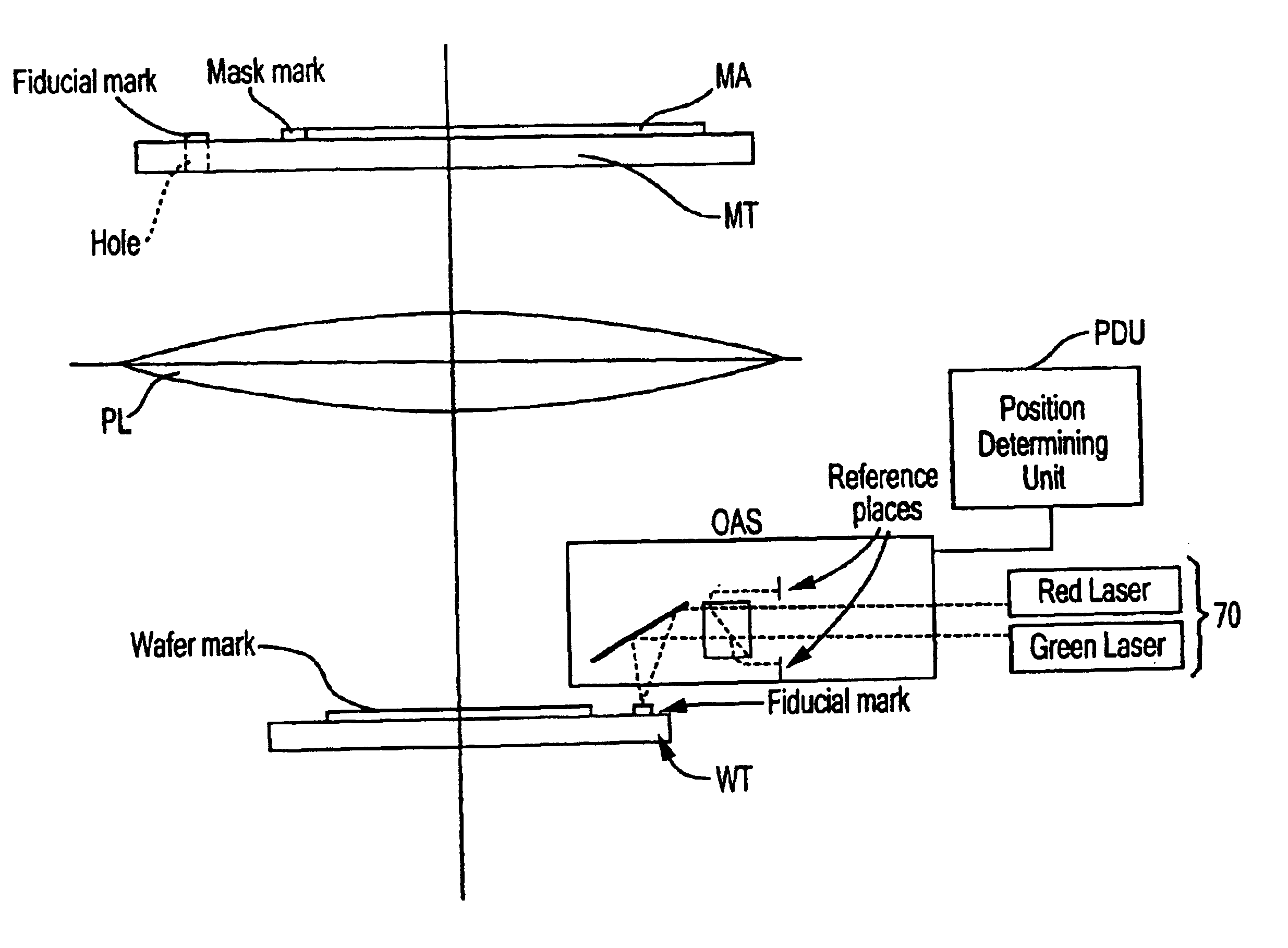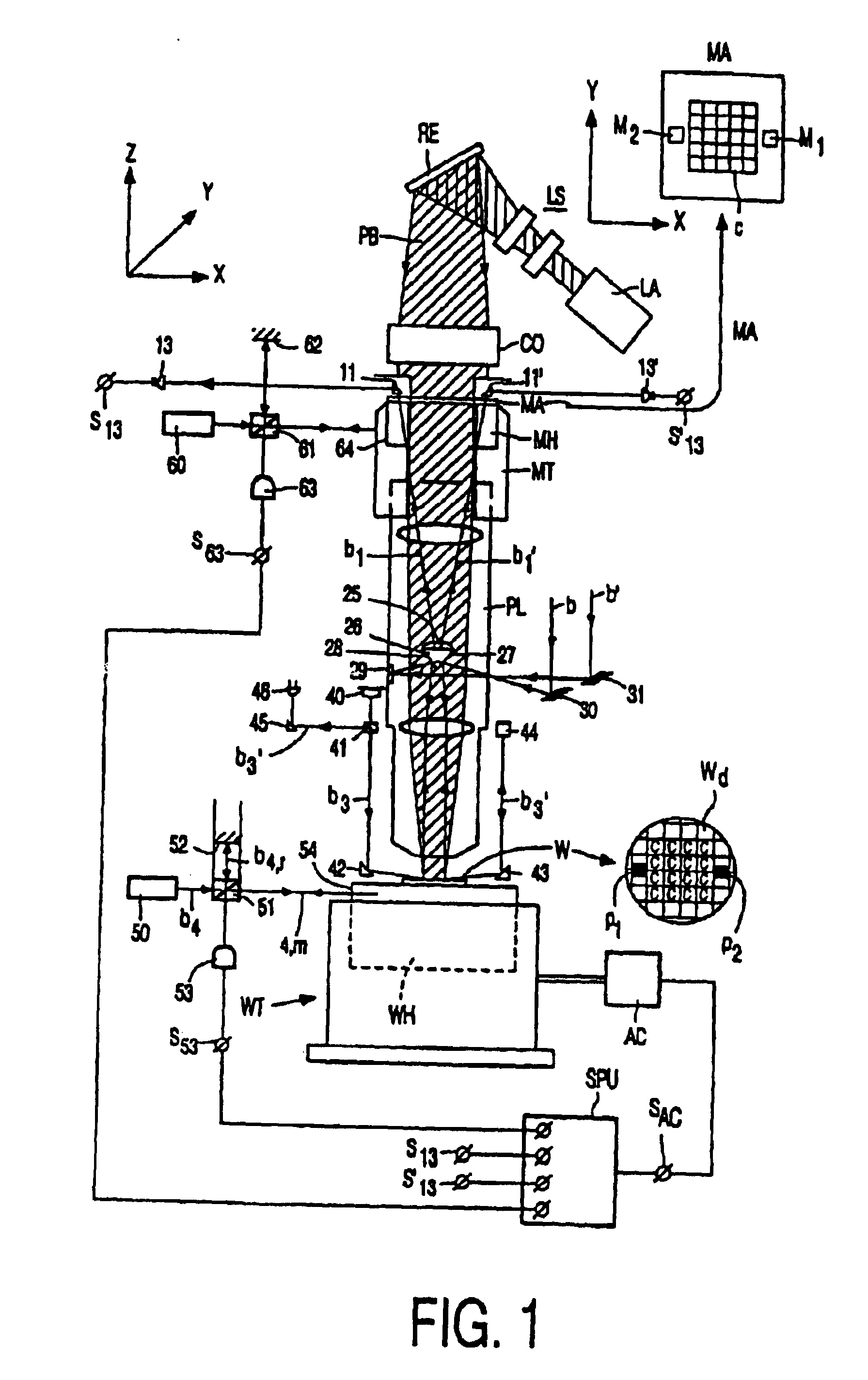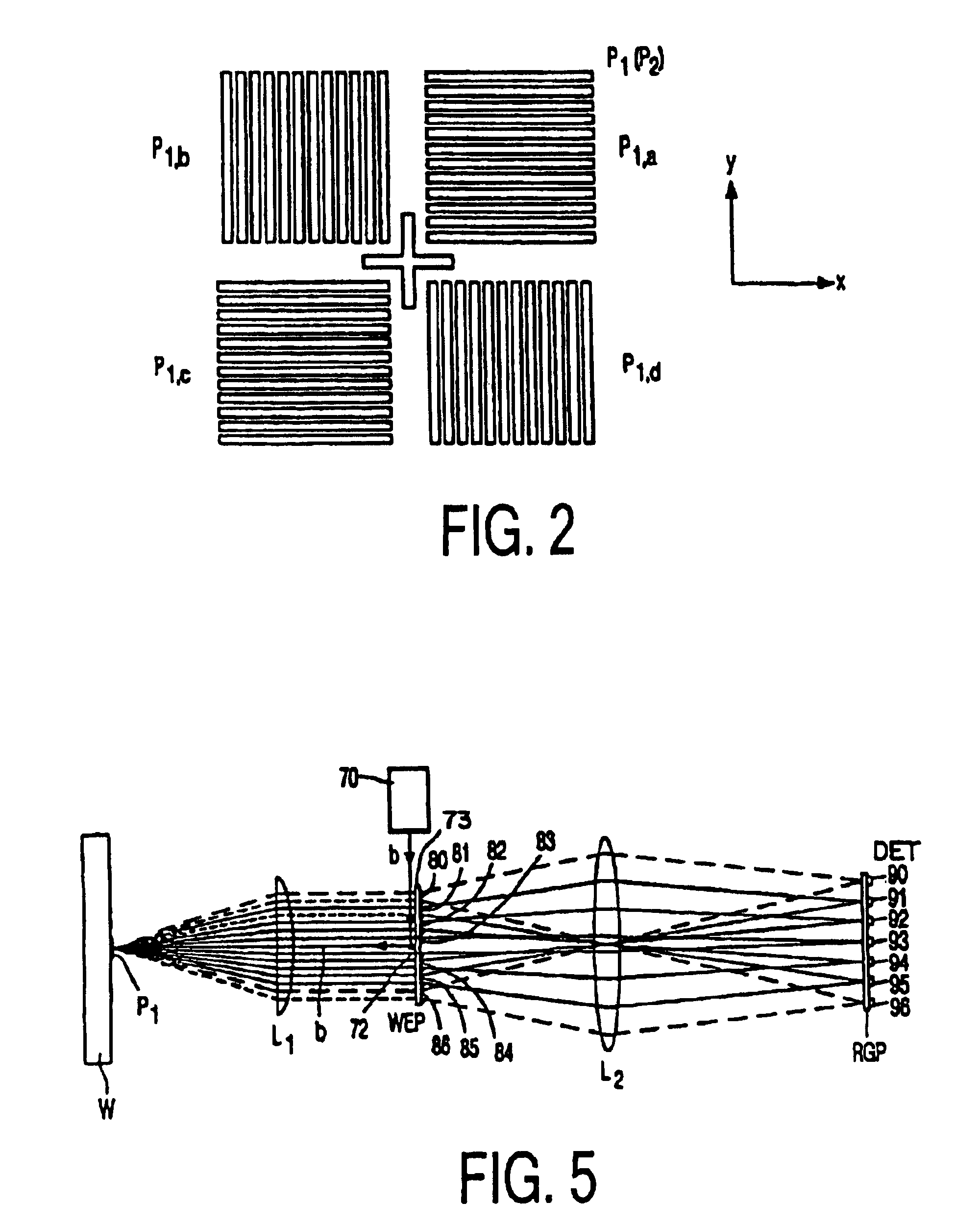Alignment system and methods for lithographic systems using at least two wavelengths
a technology of alignment system and lithographic system, which is applied in the direction of lasers, printers, instruments, etc., can solve the problems of affecting the accuracy of the on-axis alignment method, the difficulty of improving the alignment system sufficiently to achieve the required precision and accuracy, and the decrease in the size of components, etc., to achieve the effect of improving the alignment accuracy and/or robustness
- Summary
- Abstract
- Description
- Claims
- Application Information
AI Technical Summary
Benefits of technology
Problems solved by technology
Method used
Image
Examples
Embodiment Construction
Methods and devices according to this invention will now be described with reference to particular embodiments by way of example. The broad concepts of this invention are not limited to only these specifically described embodiments. The invention will be described with reference to an alignment system for a lihography system that includes both an on-axis (also referred to as “axial”) and an off-axis (“off-axial”) alignment system that can be used in combination to obtain the ultimate alignment of a mask with respect to a substrate (“workpiece”). The axial alignment system may have a separate source of radiation to illuminate alignment marks, such as in through-the-lens (TTL) or through-the-reticle (TIR) systems, or it may employ the same radiation as the exposure radiation. The following example will describe a TTL system in combination with an off-axial system (OAS) as an embodiment of this invention. Furthermore, the invention envisions application to lihography systems that have ...
PUM
 Login to View More
Login to View More Abstract
Description
Claims
Application Information
 Login to View More
Login to View More - R&D
- Intellectual Property
- Life Sciences
- Materials
- Tech Scout
- Unparalleled Data Quality
- Higher Quality Content
- 60% Fewer Hallucinations
Browse by: Latest US Patents, China's latest patents, Technical Efficacy Thesaurus, Application Domain, Technology Topic, Popular Technical Reports.
© 2025 PatSnap. All rights reserved.Legal|Privacy policy|Modern Slavery Act Transparency Statement|Sitemap|About US| Contact US: help@patsnap.com



